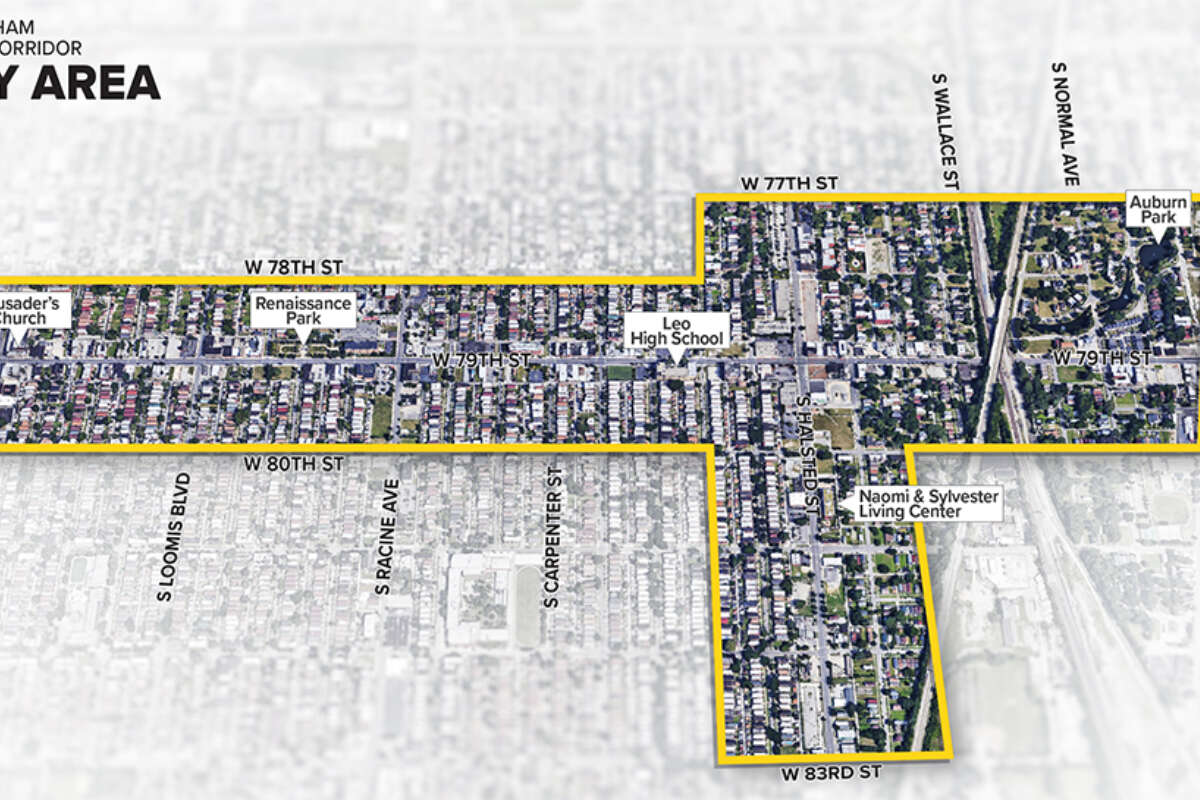RTA embarks on 79th Street Corridor Plan for Auburn Gresham, emphasizing community engagement
June 13, 2022
June 13, 2022

The RTA, in partnership with the City of Chicago’s Department of Planning and Development, is working with the Auburn Gresham community on a 79th Street Corridor Plan between South Vincennes Avenue and South Ashland Avenue. A secondary study area will include a portion of the South Halsted Street corridor from South 77th Street to South 83rd Street. The plan will focus on ways to strengthen community land use, housing, office/retail, open space, and connectivity to transit along West 79th Street and adjacent blocks. The public planning process will produce a document with implementation items based on public engagement, a transportation/mobility analysis, and a housing and office/retail market analysis. The study will also focus on corridor development, including land use, street design recommendations, and urban design guidelines. The plan is scheduled to be completed by the end of 2023.
The result will be a community-led vision for the future of the corridor that builds on multiple initiatives already underway, including:
Subscribe to our Newsletter
Related Articles
 RTA to host Suburban Transit Summit to gather feedback and build support for improving service with new funding
RTA to host Suburban Transit Summit to gather feedback and build support for improving service with new funding
To gather feedback and build support for improving transit service with new, expanded funding, the RTA is hosting a half-day Suburban Transit Summit in Arlin...
October 21, 2024 RTA Citizens Advisory Board: Get to know Karl Gieseke
RTA Citizens Advisory Board: Get to know Karl Gieseke
Following through on a key recommendation from regional transit strategic plan Transit is the Answer, the RTA launched a newly expanded, rider-focused Citize...
October 15, 2024 Why Illinois legislators must reach a transit funding solution by spring 2025—and what happens if they don’t
Why Illinois legislators must reach a transit funding solution by spring 2025—and what happens if they don’t
Chicago’s regional transit system is facing a projected operating shortfall of more than $730 million annually—or nearly 20% of the regional operating budget...
October 9, 2024 CTA presents on Red Line Extension, Pace discusses network revitalization plan during presentations to RTA Board
CTA presents on Red Line Extension, Pace discusses network revitalization plan during presentations to RTA Board
CTA President Dorval Carter and Pace Executive Director Melinda Metzger presented midyear updates to the RTA Board of Directors during their meeting on Septe...
October 3, 2024 Transit Station Activations in Rogers Park, Woodlawn bring live music, pop-up plant-based festival for riders to enjoy
Transit Station Activations in Rogers Park, Woodlawn bring live music, pop-up plant-based festival for riders to enjoy
In May, the RTA announced more than $120,000 in funding for eight Transit Station Activation projects near CTA, Metra, and Pace stations and stops. The proje...
October 3, 2024 Illinois should learn from past transit funding crises and achieve sustainable funding
Illinois should learn from past transit funding crises and achieve sustainable funding
Public transit operations in the Chicago region have been chronically underfunded—particularly at the state level. Today, state funding makes up only 17% of ...
October 1, 2024